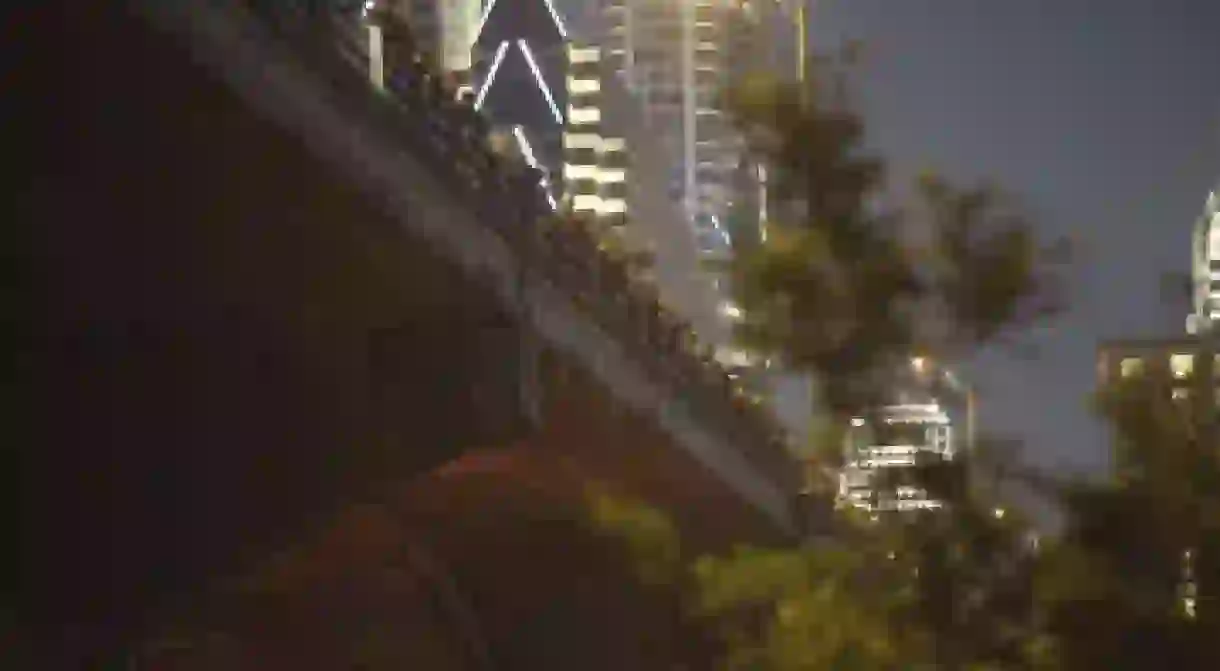Meet the Couple on a Mission to Save Austin’s Legendary Bats

These days, bats are as synonymous with Austin as live music. Nightwing, a kinetic abstract sculpture of a bat that spins in the wind, greets visitors to the colony near the southern end of the Congress Avenue Bridge. Austin Community College’s mascot is the Riverbat, and several local sports teams have incorporated bats into their theme over the years. Now, the city is welcoming some real-life furry migrants.
Austinites Lee Mackenzie and Diane Odegard are the dynamic couple who co-founded the Austin Bat Refuge – a non-profit organization dedicated to helping and rehabilitating bats.
After spending his youth in England, Mackenzie moved to Connecticut, where he graduated high school. Afterwards, he spent a year in college before heading out to see the world.
“It was more important to see the world and to live your life and not just do it all by the numbers,” Mackenzie, who is now 66, told Culture Trip. “Neither one of us had paint-by-number lives. We didn’t do the regular thing where you go to school and get your degree and follow that course you studied for the rest of your life. We just went out and saw what the world had to offer.”
For Mackenzie, that meant a somewhat vagabond life, including a six-year stint as a fruit-picker that had him splitting time between the growing seasons in Vermont and Florida. He finally decided to take a shot at Austin.
“I’d like to say that I came to school here or something like that, but the truth is I was driving an old vehicle that, by the time I got to Austin, blew a motor – and I’ve been here ever since,” he said. “I couldn’t afford to leave!”
A Minnesota native, Odegard took a more direct path to Austin.
“I came here in ’75. I was in my early 20s, and all my friends were here,” the 68-year-old said. “There’s something about Austin that’s hard to put your finger on, that is very welcoming. I mean it’s not about any one thing. It’s not about, ‘Oh, there’s great music, or there’s great places to walk and hike.’ It’s just the whole of the uniqueness of Austin and the people who live here… It feels like home.”
Once they found Austin and each other, a shared love of bats drew the couple even closer together over the years, as they founded the Austin Bat Refuge to give injured bats a second chance at life and to dispel the negative image frequently associated with the nocturnal creatures.
The couple credits Bat Conservation International (BCI) founder Merlin Tuttle for laying the necessary foundation for their work.
“He came down in 1986 because he thought this was the best place imaginable to start educating the public about bats,” said Odegard, who worked at BCI as an education and public outreach manager before retiring.
“I think the trigger was that he would read the Austin American-Statesman’s headlines,” Mackenzie added. “Rabid Flying Rodents Infest the City!” was one. The city’s flagship newspaper was located near Congress Avenue Bridge, from which the bat colony emerges to hunt at sunset in spectacular and ever-growing displays.
Tuttle did such a good job advocating for bats with the chamber of commerce, the city council and other groups in Austin that eventually attitudes toward the furry, friendly spring migrants from Mexico begin to shift.
“He mostly went to schools and held assemblies. He was a National Geographic photographer, so he had amazing photos of bats… world-renowned. He went to the schools to show these photos to the kids, and the kids went crazy over it. Kids love animals,” Mackenzie said. “They took the message home to their parents and that really turned the tide in Austin… Within a couple of years the headlines changed.”
“I think because of that bridge being right in the heart of town, and the bat being such an amazing resource, it’s really become the iconic image of Austin now,” said Mackenzie of the bats’ celebrity. “I think the Barton Creek Greenbelt, Barton Springs and the Congress Avenue Bridge downtown are the three things in Austin that make it what it is. It’s a wonderful reminder that we’re just a part of the natural world.”













